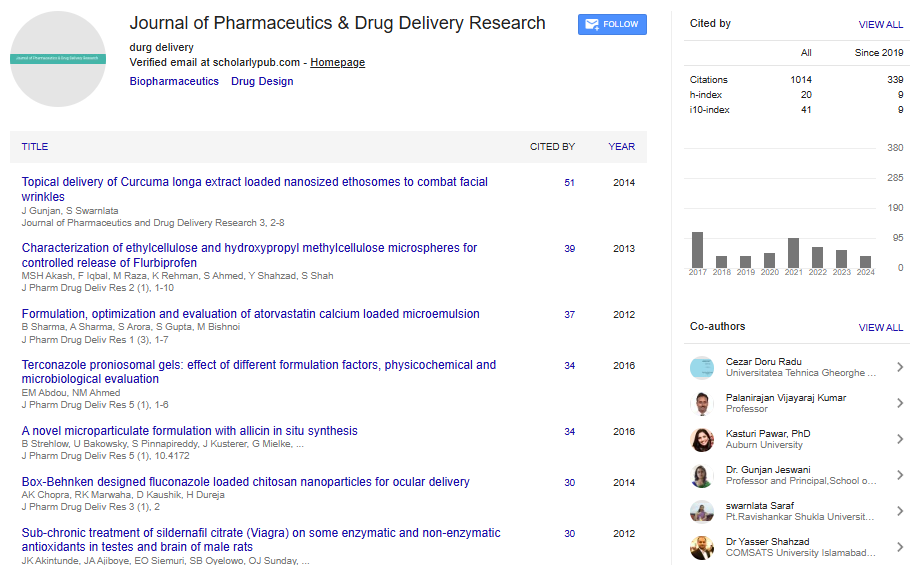Consecutive evaluation of graphene oxide and reduced graphene oxide nanoplatelets immunotoxicity on monocytes
Chia-Hua Lin, Saranta Sawettanun, Yu-Jing Lin and Junyan Yan
National Formosa University, Taiwan
Chinese Academy of Sciences, China
: J Pharm Drug Deliv Res
Abstract
Because of their wide range of unique properties, graphene and Graphene Family Nanomaterials (GFNs), isolated from their three dimensional parental material graphite, can serve as starting materials for developing innovative therapeutic strategies. In medicine, GFNs have emerged as the most promising seed for various applications, such as drug delivery, anticancer therapy, and biosensing. However, the toxicity and safety of GFNs in the treatment of human diseases should be systematically assessed both in vitro and in vivo. The present study aimed to consecutively assess the immunotoxicity of Graphene Oxide Nanoplatelets (GONPs) and reduced GONPs (rGONPs) on THP-1 cells, a human acute monocytic leukemia cell line. GONPs induced the expression of antioxidative enzymes and inflammatory factors, whereas rGONPs had substantially higher cellular uptake rate, higher levels of NF-κB expression. These distinct toxic mechanisms were observed because the two nanomaterials differ in their oxidation state, which imparts different affinities for the cell membrane. Because GONPs have a higher cell membrane affinity and higher impact on membrane proteins compared with rGONPs, macrophages (THP-1a) derived from GONPs treated THP-1cells showed a severer effect on phagocytosis. By consecutive evaluation the effects of GONPs and rGONPs on THP-1 and THP-1a, we demonstrated that their surface oxidation states may cause GFNs to behave differently and cause different immunotoxic effects.
Biography
Chia-Hua Lin has his expertise in Nanotoxicology, Environmental Toxicology and Nanobiotechnology. His group consists of multidisciplinary team of researchers including Chemist, Engineers and Cell and Molecular Biologists. He has established platforms for evaluating toxicity of nanoparticles and environmental pollutants in vivo and in vitro, including characterization, tissue distribution, metabolism, biochemical responses and molecular mechanisms. He has a sub-specialization in developing engineered biomaterials for cancer therapy, and investigating their effect on in vitro and in vivo photo-therapeutic evaluation.
Email: vicchlin@nfu.edu.tw
 Spanish
Spanish  Chinese
Chinese  Russian
Russian  German
German  French
French  Japanese
Japanese  Portuguese
Portuguese  Hindi
Hindi 
